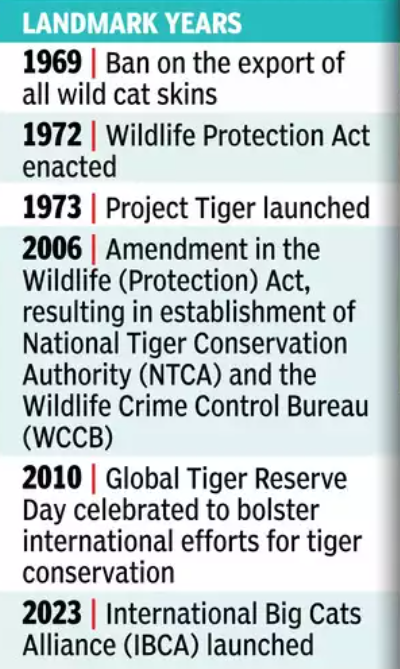Maternal Challenges and Infanticide in Captive Big Cats: Understanding Behavioral Complexities
(Source: Indian Express; Section: Explained; Page: 17)
| Topic: GS3 – Environment |
| Context: |
|
Analysis of News:
Infanticide in Mythology
- Infanticide has long been a theme in human history and mythology.
- Examples include the ancient Spartans abandoning weak infants and Greek myths like Cronus devouring his children, showcasing parallels between human narratives and animal behavior driven by survival instincts.
Infanticide in the Animal Kingdom
- Infanticide among animals often stems from resource management or territorial dynamics.
- Male cats kill rival offspring to secure their lineage, while mothers may selectively kill weak cubs to allocate resources more effectively.
- These behaviors reflect survival strategies rather than emotional decisions.
Resource Allocation and Maternal Challenges
- Mothers in both the wild and captivity may reject or kill weaker cubs to focus on stronger offspring.
- Hormonal imbalances, inexperience, or stress can exacerbate this behavior. Instances across Indian and international zoos reveal patterns of abandonment, accidental injuries, and outright infanticide driven by maternal anxiety or environmental factors.
Stress and Environmental Factors
- Captivity introduces stressors that amplify maternal insecurity. Changes in familiar routines or sudden environmental shifts can provoke extreme protective instincts, often leading to fatal consequences for cubs.
- Examples from Hyderabad and Antwerp zoos underscore how stress impacts maternal decisions.
Misinterpretations of Animal Behavior
- Humans often misjudge animal behavior through emotional or anthropomorphic lenses.
- Infanticide in the wild or captivity is sometimes a survival tactic, such as consuming dead cubs to regain energy or removing carcasses to protect living cubs from predators.
- Understanding these actions requires a shift away from human-centric interpretations.
Conclusion
- Infanticide among animals, particularly in captivity, reflects complex biological and environmental factors rather than cruelty.
- Addressing such incidents calls for improved management practices in zoos, better understanding of animal behavior, and the creation of stress-free environments to mitigate risks to offspring.

| What are the Conservation Efforts of Big Cats in India? |
|
| Practice Question: Infanticide among captive animals, especially in zoos, is often driven by resource management, hormonal imbalances, and environmental stress. Discuss the factors contributing to such behavior in animals and the implications for zoo management and conservation efforts. (250 words/15 m) |


